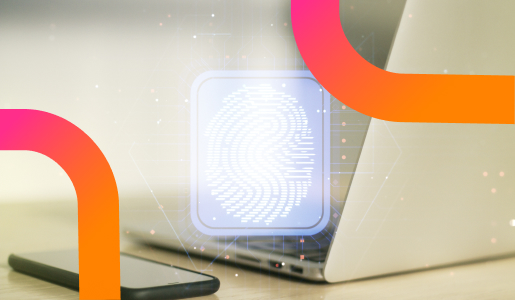The digitalisation of contracts has led to widespread use of electronic signatures, including for documents with significant legal implications. However, the evidentiary effectiveness of such signatures depends on various regulatory and technical parameters. Regulation (EU) No 910/2014 (eIDAS) defines three levels of electronic signature: simple, advanced, and qualified. Only the latter benefits from a presumption of reliability, which shifts the burden of proof onto the party challenging the signature.
Nevertheless, this presumption alone is not always sufficient and recent case law reveals a growing demand for high-quality and well-documented technical evidence.

Table of contents
- Why review the probative Value of an Electronic Signature?
- Integrating timestamping into internal signature systems
- Courts increasingly examine the technical components of electronic evidence
- Best practices to ensure admissibility of electronic signatures: timestamping and sealing
Why review the probative Value of an Electronic Signature?
Integrity, identity, reliability: the three pillars of electronic signatures
The evidentiary value of an electronic signature depends on its ability to demonstrate three elements: the signatory’s identity, the integrity of the document, and the reliability of the signing process. The eIDAS regulation distinguishes among the following signature levels:
- Simple: lacks true identity or integrity controls, often relying merely on an email address or user ID.
- Advanced: uniquely linked to the signatory and created using means under their sole control.
- Qualified: based on a qualified certificate issued by a Trust Service Provider (QTSP) and created using a Qualified Signature Creation Device (QSCD).
The importance of a robust technical evidence file
Only qualified signatures benefit from a strong legal presumption of reliability. However, recent case law¹ demonstrates that judges increasingly look deeper into the technical construction of the evidence file. For it to be deemed valid, this file must contain tangible elements such as:
- A clearly structured audit file,
- A qualified timestamp ensuring a legally recognised date,
- Explicit documentation of each technical step, avoiding raw, non-interpretable formats like uncommented XML,
- Where appropriate, an electronic seal from the QTSP to secure the entire package and confirm the authenticity of the proof provider.
Clarity, coherence, and accessibility of the evidence file are now key criteria in judicial evaluation. Opposing parties will increasingly rely on these standards to dispute the validity of a signature.
Integrating timestamping into internal signature systems
What is the purpose of a qualified electronic timestamp?
As defined in Articles 41 and 42 of the eIDAS regulation, a qualified timestamp associates a legally recognised date and time with a file. It ensures that the file has not been modified since the date was affixed, thereby granting the document a recognised temporal value across the EU.
How to enhance the probative value of an electronic signature using a qualified timestamp?
Some organisations choose to develop their own in-house electronic signature systems to address specific needs, such as:
- Controlling user experience (UX/UI),
- Speeding up deployment,
- Ensuring seamless integration with proprietary processes or IT systems,
- Or reducing costs, as in-house signatures may be less expensive than using an external qualified provider.
In these custom systems, adding a qualified timestamp token from a QTSP is an effective tool to establish the exact date, reinforce integrity, and confer high evidentiary value to the signed document.
Typical use cases include HR document management, internal approval workflows, or online consent collection.
Courts increasingly examine the technical components of electronic evidence
In 2025, several Courts of Appeal handed down rulings that reflect a increased level of scrutiny by judges concerning electronic evidence, even when the signature is issued from a qualified trust service provider. The referenced cases¹ mostly involve disputes between established banks or credit institutions and clients who had signed loan agreements. A common thread is the challenge to the evidentiary value of the electronic signatures, including qualified ones, due to insufficient or unreadable technical documentation.
Examples of rulings rejecting the admissibility of electronic signatures
- Court of Appeal of Rouen, 10 April 2025, Case No. 24/01774: The evidence file was unusable due to lack of comprehensible documentation.
- Court of Appeal of Paris, 3 April 2025, Case No. 23/19316: A mere “electronically signed” mention was deemed insufficient to establish admissibility.
- Court of Appeal of Douai, 27 March 2025, Case Nos. 22/05040 and 22/05041: The execution certificates were present but failed to identify the signatory with certainty.
- Court of Appeal of Riom, 19 March 2025, Case No. 24/00497: No proof of the integrity of the signed document was provided.
- Court of Appeal of Versailles, 29 April 2025, Case No. 24/04372 and Court of Appeal of Paris, 15 May 2025, Case No. 24/02375: The technical documentation was incomplete and too complex for judicial assessment.
It is essential to observe all required technical diligence for a signature to be legally qualified, and in the absence of precise guidelines, ensure that documentation is as clear and detailed as possible.
These rulings share a clear message: judges now demand detailed documentation of the technical processes underlying electronic evidence. They will not hesitate to reject evidence if the procedures used to verify identity and document integrity are not transparently and legibly presented.
This underscores the need to meet all technical diligence standards required for a legally qualified signature. Failure to provide clear descriptions of authentication methods, document validation, or event logging may result in outright rejection of the evidence. A well-structured evidence file is therefore essential—one that includes a qualified timestamp for date-certainty and, where applicable, an electronic seal to ensure long-term integrity.
Best practices to ensure admissibility of electronic signatures: timestamping and sealing
To enhance the evidentiary strength of an electronic signature and ensure its admissibility in court, several best practices should be followed:
- When developing internal signature systems, associate a qualified timestamp from a QTSP whenever there is a high risk of dispute.
- In all cases, ensure that the evidence file presented in litigation is clear, comprehensible, and unequivocally linked to the signed document.
- Provide a plain-language explanation of the signature process suitable for a judge who may not be familiar with technical jargon—this should include authentication methods and technical steps taken.
- Preferably, affix a qualified timestamp at each stage of the technical process to certify its timing.
- Where relevant, apply an electronic seal to the evidence file to secure technical elements, guarantee authenticity, and reinforce enforceability of the agreement.
Conclusion
The debate over the evidentiary value of electronic signatures cannot be reduced to a simple/advanced/qualified distinction. It unfolds against a backdrop of case law from the first half of 2025, in which several French Courts of Appeal dismissed electronic signatures due to technical deficiencies in the supporting evidence. These rulings show that judges now systematically examine the structure of the probative file when assessing admissibility.
Furthermore, attaching a qualified timestamp to a non-qualified signature, as defined under the eIDAS regulation, is a simple and cost-effective solution for strengthening its evidentiary value.
Case law referenced throughout this article:
Court of Appeal of Rouen, 10 April 2025, Case No. 24/01774
Court of Appeal of Paris, 3 April 2025, Case No. 23/19316
Court of Appeal of Douai, 27 March 2025, Case Nos. 22/05040 and 22/05041
Court of Appeal of Riom, 19 March 2025, Case No. 24/00497
Court of Appeal of Versailles, 29 April 2025, Case No. 24/04372
Court of Appeal of Paris, 15 May 2025, Case No. 24/02375
Disclaimer
The opinions, presentations, figures and estimates set forth on the website including in the blog are for informational purposes only and should not be construed as legal advice. For legal advice you should contact a legal professional in your jurisdiction.
The use of any content on this website, including in this blog, for any commercial purposes, including resale, is prohibited, unless permission is first obtained from Evidency. Request for permission should state the purpose and the extent of the reproduction. For non-commercial purposes, all material in this publication may be freely quoted or reprinted, but acknowledgement is required, together with a link to this website.



